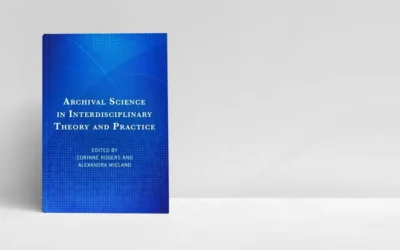Collections Management Systems as Productivity Tools
Margot Note
Fully-featured collections management systems (CMS) make it easier to enter data quickly and consistently by validating terms against authority tables, ensuring user access to all related records when seeking specific keywords or subjects. Since archivists set the terms of their organization’s authority tables, they have complete control over the terminology applied.
Efficient Data Entry
A CMS includes features that help archivists enter data efficiently. They can move selectively from field to field, using only the fields they need to describe a given collection, series, container, or item. An archival system also allows them to build on information they have previously entered. For example, describing the folders that apply to a previously entered series-level record is only a click away.
Organizations can determine definitions, format guidelines, best practices, standards, and local examples for data elements. The repository can categorize each element as either mandatory or optional. Mandatory fields contain the appropriate information or a locally defined default statement and cannot be left blank. Optional elements are left to archivists to determine whether the element’s use is appropriate and to provide the information. An archival CMS supports these decisions by being customized for the repository’s needs.
Item-Level Description is Possible
Collections management systems may also provide productivity tools to minimize data entry time. These tools can make it possible to clone records and build templates so that fields with similar metadata, such as subject access terms and physical characteristics, can be automatically populated. These time-saving tools facilitate the efficiency required for item-level cataloging of unique materials. While item-level description is not ideal or sustainable for all collections, it is sometimes necessary for parts of collections. Some individual records within particular collections or series may have many homogeneous description fields that can be batch-generated, providing a level of access that would usually require much more labor to produce.
Archivists have traditionally focused on archival materials in the aggregate, but researchers may not understand why archivists describe collections at the box- or folder-level. Users tend to mploy the item-centric search function in an online collections portal more often than utilizing finding aids for initial discovery and access. Although many finding aids are clear and helpful, novice users may not be comfortable accessing them or understand the information they hold, let alone the archival concepts of provenance and original order that shape archival work. Item-based access incorporates archival material into modern discovery and access systems rather than segregating archives and manuscripts into separate finding aids stored elsewhere online.
Archivists can add information based on the unique nature of the item. The resulting record then holds unique information about that item and contextualized knowledge that makes grouping the item by numerous attributes possible. The addition of controlled subject-access terms to records, each of which is presented individually to users with attribution to the originating collection, liberates records from the constraints of being findable only within the context of collections.
Improving Services
Unfortunately, archives, like libraries, museums, and other institutions of knowledge, are confronting rapidly growing demand for services while facing stagnant, diminished, or cut resources. Success within this challenging environment requires innovative management practices that maximize resources while focusing on the needs of current and prospective users. What tends to be forgotten within this demanding situation is archivists’ labor, which is often overly cumbersome and frustrating due to inadequate information systems. A fully-featured CMS allows archives to improve and extend services without adding resources, significantly increasing the overall operational budget, or wasting the valuable work of archival professionals.
Margot Note
Margot Note, archivist, consultant, and author is a guest blogger for Lucidea, provider of ArchivEra, archival collections management software for today’s challenges and tomorrow’s opportunities. Read more of Margot’s posts, and register here for her upcoming webinar, “CMS Essentials for Success #3: Efficiency” on March 17, 2021.
Similar Posts
Ensuring Long-Term Access to Digital Archives
Long-term preservation is essential to ensure digital archives remain accessible and usable.
5 Best Practices for Personal Digital Archiving
Archivists have developed best practices for organizing and maintaining personal digital archives, safeguarding digital legacies for future generations.
Interview with the Editors: Wieland and Rogers on Interdisciplinary Archival Science
Alexandra Wieland and Corinne Rogers co-edited Archival Science in Interdisciplinary Theory and Practice. My interview with them is below.
The Importance of Personal Digital Archiving (Plus Steps to Get Started)
Archivists often help individuals manage and preserve digital files of personal significance.




Leave a Comment
Comments are reviewed and must adhere to our comments policy.
0 Comments